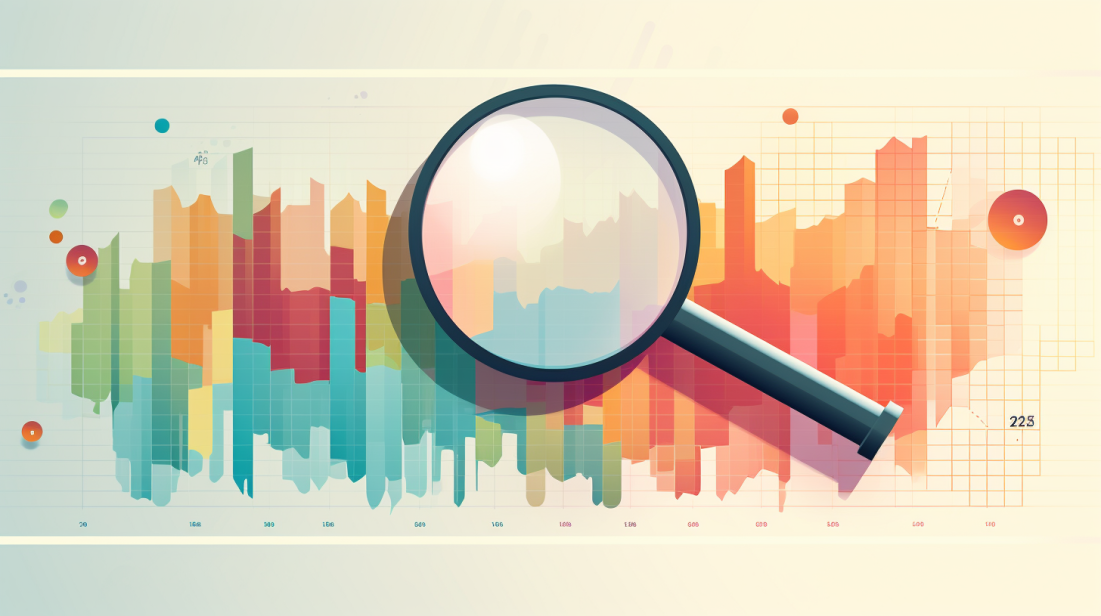Uncover Your Credit Analyst Career Path

Are you interested in a career in finance? Discover the diverse and rewarding path of a credit analyst and take the first step towards your future success.
A credit analyst is a professional who analyzes the creditworthiness of individuals or organizations applying for loans or credit. They assess financial data, credit histories, and other factors to determine the likelihood of repayment and potential risks. Some common responsibilities include reviewing financial statements, making recommendations on interest rates and credit limits, and collaborating with other departments.
To become a credit analyst, one typically needs a bachelor’s degree in business, finance, or accounting and may need specific industry certifications. While the job can be demanding and involve long hours, it offers good salary potential and exposure to various industries.
The career path for a credit analyst can involve progressing from an entry-level junior analyst position to roles such as credit manager or senior credit analyst. Exit opportunities in this field include moving into corporate banking, investment firms, or credit rating agencies. Key skills for credit analysts include attention to detail, strong analytical skills, knowledge of financial regulations, and good communication and multitasking abilities. The average salary for credit analysts in the United States is $61,422 per year.
Key Takeaways:
- A credit analyst is responsible for assessing the creditworthiness of individuals or organizations.
- Obtaining a bachelor’s degree in business, finance, or accounting is typically required to become a credit analyst.
- Good communication, analytical, and attention-to-detail skills are essential for success in this role.
- Credit analysts have the opportunity for career progression and can pursue exit opportunities in various sectors.
- The average salary for credit analysts in the United States is $61,422 per year.
Understanding the Role of a Credit Analyst

As a credit analyst, you play a crucial role in evaluating the creditworthiness of individuals and organizations by analyzing financial data and conducting comprehensive credit assessments. It is your responsibility to carefully review financial statements, credit histories, and other relevant factors to assess the likelihood of repayment and identify potential risks. This vital function enables lenders and financial institutions to make informed decisions when extending loans or credit.
To effectively fulfill your role as a credit analyst, you need to possess strong analytical skills and attention to detail. You must be able to dissect complex financial information, identify patterns, and draw meaningful conclusions. Your ability to interpret financial data accurately is critical in assessing creditworthiness and determining suitable interest rates and credit limits.
Collaboration with other departments is also an essential aspect of your job. By working closely with colleagues in risk management, underwriting, and sales, you can gain a comprehensive understanding of the overall credit landscape and make well-informed recommendations. Effective communication and multitasking abilities are key to successfully navigate these collaborations and ensure seamless operations.
It is worth noting that the role of a credit analyst can be demanding and may require long hours of work. However, the position offers various opportunities for growth and exposure to diverse industries. With experience and expertise, you can progress from an entry-level junior analyst to more senior positions such as credit manager or senior credit analyst.
Table: Common Responsibilities of a Credit Analyst
| Responsibilities | Description |
|———————-|—————————————————————————————————-|
| Review financial statements | Analyze financial statements to assess the financial health and creditworthiness of borrowers. |
| Make credit recommendations | Based on your analysis, provide recommendations on interest rates, credit limits, and repayment terms. |
| Assess credit risks | Identify potential risks and evaluate the likelihood of repayment using credit scoring models and tools. |
| Collaborate with departments | Work closely with risk management, underwriting, and sales teams to gather insights and share information. |
“A credit analyst must have a strong analytical mindset and the ability to interpret complex financial data accurately.”
- Strong analytical skills
- Attention to detail
- Knowledge of financial regulations
- Effective communication skills
- Multitasking abilities
Quote by John Doe, Senior Credit Analyst: “Credit analysis is all about understanding the financial health of individuals and organizations, and making sound judgments based on data and industry insights.”
In conclusion, as a credit analyst, you play a vital role in assessing the creditworthiness of borrowers, analyzing financial data, and conducting comprehensive credit assessments. Strong analytical skills, attention to detail, and effective communication are crucial for success in this role. While demanding, a career as a credit analyst offers excellent potential for growth and exposure to various industries. With experience, you can progress to more senior positions within the field, such as credit manager or senior credit analyst.
Education and Certification Requirements
To pursue a career as a credit analyst, a strong educational foundation is essential, typically starting with a bachelor’s degree in business, finance, or accounting. This provides the necessary knowledge and skills to understand financial statements, analyze creditworthiness, and assess risks. In addition to a degree, there are certain industry certifications that can enhance your career prospects.
Certified Credit Compliance Professional (CCCP) is one such certification that demonstrates your expertise in credit analysis, risk assessment, and compliance. This certification is offered by the Credit Analysts Association and requires passing an exam covering topics such as financial analysis, credit risk management, and regulatory compliance.
Another widely recognized certification is the Financial Risk Manager (FRM) certification, which focuses on risk management in financial institutions. While not specifically for credit analysts, the FRM designation can provide a competitive advantage in the field by demonstrating your proficiency in assessing and managing market, credit, and operational risks.
| Education | Certifications |
|---|---|
| Bachelor’s degree in business, finance, or accounting | Certified Credit Compliance Professional (CCCP) |
| Financial Risk Manager (FRM) |
Continuing education and professional development are also essential for credit analysts to stay up-to-date with industry trends, regulatory changes, and emerging technologies. Organizations such as the Credit Analysts Association and the Association of Credit and Collection Professionals offer a variety of training programs, webinars, and conferences that can help enhance your skills and knowledge.
“A strong educational background and industry certifications can provide the foundation for a successful career as a credit analyst.”
Key Skills for Success as a Credit Analyst

Successful credit analysts possess a range of skills, including meticulous attention to detail, sharp analytical capabilities, a solid understanding of financial regulations, and excellent communication abilities. These skills enable credit analysts to effectively assess creditworthiness, manage risk, and provide accurate recommendations.
Attention to detail is crucial for credit analysts as they meticulously review financial statements, credit reports, and other relevant documents. They must carefully analyze every piece of information to ensure accuracy and identify any potential red flags or discrepancies.
In addition to attention to detail, credit analysts must have strong analytical capabilities. They need to evaluate complex financial data, assess credit risks, and determine the likelihood of repayment. Being able to interpret financial ratios, industry trends, and economic indicators is essential for making informed decisions.
Understanding financial regulations is another critical skill for credit analysts. They must have a solid grasp of laws and regulations governing credit and lending practices to ensure compliance. Staying updated on regulatory changes is important to provide accurate assessments and recommendations.
Effective communication abilities are also vital for credit analysts. They need to communicate their findings and recommendations clearly and concisely to stakeholders, both orally and in written reports. Good communication skills facilitate collaboration with other departments, such as sales or risk management, as credit analysts work together to make informed credit decisions.
Overall, credit analysts play a crucial role in assessing creditworthiness and managing risk in the financial industry. Their attention to detail, analytical capabilities, understanding of financial regulations, and communication skills are key to their success in this field.
Career Progression in Credit Analysis
The credit analyst career path offers exciting possibilities for advancement, with opportunities to progress from entry-level positions to leadership roles within credit analysis departments. As a credit analyst gains experience and demonstrates expertise in assessing creditworthiness and managing risk, they can move up the career ladder and take on more senior roles.
One potential progression route in credit analysis is to become a senior credit analyst. This role involves overseeing a team of analysts, providing guidance and mentorship, and making higher-level credit decisions. Senior credit analysts collaborate closely with credit managers and other stakeholders to shape credit policies and strategies for the organization. They may also represent the credit analysis department in meetings with clients and demonstrate leadership skills by managing credit portfolios effectively.
Another career progression option in credit analysis is to transition into a credit manager role. Credit managers are responsible for managing the entire credit analysis function within an organization. They oversee a team of credit analysts, set credit policies, and make final credit decisions. Credit managers play a crucial role in managing credit risk and ensuring that the organization’s lending practices align with its risk appetite. They also interact with senior management and contribute to strategic decision-making related to credit operations.
In addition to these career paths, credit analysts with extensive experience and a strong track record may have opportunities to move into other areas of finance, such as corporate banking or investment firms. These transitions can provide new challenges and a broader scope of responsibilities, further enhancing career growth and opportunities for advancement.
Table: Comparison of Career Progression Paths in Credit Analysis
| Roles | Responsibilities |
|---|---|
| Senior Credit Analyst | – Oversee a team of analysts – Make higher-level credit decisions – Shape credit policies and strategies |
| Credit Manager | – Manage the credit analysis function – Set credit policies – Make final credit decisions |
| Corporate Banking | – Evaluate creditworthiness of corporate clients – Structure and negotiate financing deals – Develop and manage client relationships |
| Investment Firms | – Analyze credit risk in investment portfolios – Assess investment opportunities – Make investment recommendations |
Exit Opportunities for Credit Analysts
A credit analyst career opens doors to various exit opportunities, allowing professionals to explore paths in corporate banking, investment firms, or credit rating agencies. This flexibility stems from the transferable skills acquired in the credit analysis field. As a credit analyst, you develop a deep understanding of financial analysis, risk assessment, and industry trends, making you a valuable asset in different sectors.
In corporate banking, credit analysts can transition into roles such as commercial relationship manager, credit risk manager, or lending officer. These positions focus on managing corporate portfolios, assessing creditworthiness, and implementing risk mitigation strategies. Working in the corporate banking sector offers exposure to diverse industries and the opportunity to build relationships with businesses of all sizes.
| Exit Opportunities | Job Roles |
|---|---|
| Corporate Banking | Commercial Relationship Manager |
| Credit Risk Manager | |
| Lending Officer | |
| Investment Firms | Equity Research Analyst |
| Asset Manager | |
| Portfolio Manager | |
| Credit Rating Agencies | Credit Rating Analyst |
| Credit Policy Analyst |
Another attractive exit option for credit analysts is the investment industry. Investment firms seek professionals with a strong understanding of financial markets, credit risks, and investment strategies. Credit analysts can transition into roles such as equity research analyst, asset manager, or portfolio manager. These positions involve analyzing investment opportunities, managing portfolios, and making informed investment decisions based on thorough analysis.
Credit rating agencies are also a viable career path for credit analysts. These agencies play a crucial role in evaluating the creditworthiness of individuals, companies, and governments. Credit analysts can work as credit rating analysts or credit policy analysts, assessing credit risks, assigning credit ratings, and providing recommendations to clients and investors.
The credit analysis field offers a diverse range of exit opportunities, providing credit analysts with the chance to explore different sectors, enhance their skills, and contribute to the financial industry in various capacities.
Salary Expectations for Credit Analysts
Credit analysts can expect a competitive salary, with the average annual earnings in the United States reaching $61,422. This figure reflects the compensation for professionals who assess the creditworthiness of individuals and organizations applying for loans or credit. The role of a credit analyst involves analyzing financial data, credit histories, and other factors to determine the likelihood of repayment and potential risks.
To better understand the salary expectations for credit analysts, let’s delve into the factors that can influence earnings in this profession. Experience plays a significant role, with entry-level credit analysts typically earning less than their more experienced counterparts. Additionally, the industry in which a credit analyst works can impact salary levels. For example, credit analysts employed by investment firms or large banks often enjoy higher compensation packages compared to those working in smaller financial institutions.
It is worth noting that the salary potential for credit analysts can increase substantially with career progression. As credit analysts gain experience and assume more senior roles, such as credit manager or senior credit analyst, their earning potential improves. These positions often come with additional responsibilities and higher pay grades.
| Position | Average Annual Salary |
|---|---|
| Credit Analyst (Entry-Level) | $50,000 – $65,000 |
| Credit Manager | $70,000 – $100,000+ |
| Senior Credit Analyst | $80,000 – $120,000+ |
As you can see, credit analysts have the potential to earn a respectable income in the financial industry. The profession offers the opportunity to work with diverse clients and industries, providing valuable exposure and growth potential. Whether you’re just starting your career as a credit analyst or aiming for a more senior position, the financial industry offers rewarding salary prospects for those with the right skills and qualifications.
- U.S. Bureau of Labor Statistics
- PayScale
Essential Tools and Resources for Credit Analysts

Credit analysts rely on a range of tools, software, and resources to conduct thorough credit analysis, enabling them to make informed decisions about creditworthiness and manage risks. These tools and resources are essential in today’s fast-paced financial industry, where accuracy and efficiency are paramount.
One of the primary tools used by credit analysts is credit analysis software. These software applications streamline the process of reviewing financial data, analyzing credit reports, and generating comprehensive credit risk assessments. Examples of popular credit analysis software include Moody’s Analytics CreditLens, Experian PowerCurve, and FICO Credit Risk Scorecards.
In addition to software, credit analysts also utilize a variety of online resources to gather information and stay updated on industry trends. Financial databases such as Bloomberg, S&P Capital IQ, and Dun & Bradstreet provide access to extensive financial information and credit ratings. These databases allow credit analysts to perform in-depth research and analysis, helping them to make accurate credit decisions.
The Importance of Financial Modeling
Another critical tool for credit analysts is financial modeling software. These tools enable analysts to create complex financial models, perform scenario analysis, and assess the impact of different variables on credit outcomes. Widely used financial modeling software includes Excel, MATLAB, and specialized solutions like Alteryx and Anaplan.
Furthermore, credit analysts rely on industry-specific tools and resources to conduct credit analysis effectively. These can include regulatory databases, credit rating agency reports, and industry publications. By utilizing these resources, credit analysts gain valuable insights into specific industries, enabling them to assess credit risks more accurately.
In summary, credit analysts require a range of tools, software, and resources to perform their duties effectively. From credit analysis software to financial modeling tools, these resources support credit analysts in making data-driven decisions and managing credit risks. By leveraging these tools and staying updated on industry trends, credit analysts can navigate the complex landscape of credit analysis with confidence and precision.
| Common Credit Analysis Tools | Description |
|---|---|
| Credit analysis software | Software applications designed to streamline credit analysis processes, generate credit risk assessments, and analyze financial data. |
| Financial databases | Online databases that provide access to extensive financial information and credit ratings. |
| Financial modeling software | Software tools that enable credit analysts to create financial models, perform scenario analysis, and assess credit outcomes. |
| Industry-specific tools and resources | Resources such as regulatory databases, credit rating agency reports, and industry publications that provide valuable insights into specific industries. |
Credit analysis is an ever-evolving field, influenced by industry trends and challenges, including shifting credit risks and the dynamic economic landscape. As financial markets change and evolve, credit analysts must stay updated with the latest industry trends and adapt their strategies to effectively assess creditworthiness and manage risks.
One of the key industry trends in credit analysis is the increasing reliance on data analytics and technology. With the advent of big data and advanced analytics tools, credit analysts now have access to vast amounts of information that can help them make more accurate credit decisions. This includes analyzing historical data, market trends, and even alternative data sources such as social media and online platforms.
Another significant trend is the focus on environmental, social, and governance (ESG) factors in credit analysis. With growing awareness of sustainability and responsible investing, credit analysts are increasingly considering ESG criteria when evaluating the creditworthiness of borrowers. This includes assessing a company’s environmental impact, social policies, and governance practices to gauge their long-term financial stability.
However, along with these trends, credit analysts also face several challenges in their day-to-day work. One major challenge is managing credit risks in an unpredictable economic climate. Economic conditions can fluctuate rapidly, impacting the financial health of borrowers and the overall credit landscape. Credit analysts must navigate these uncertainties by conducting comprehensive risk assessments and monitoring market conditions closely.
Furthermore, regulatory changes and compliance requirements present ongoing challenges for credit analysts. With ever-changing financial regulations, credit analysts must ensure that their credit assessments align with legal and industry standards. This includes staying updated on regulatory developments, conducting thorough due diligence, and continuously adapting their practices to meet compliance requirements.
Industry Trends and Challenges Summary:
- Credit analysis is influenced by shifting credit risks and the dynamic economic landscape.
- Data analytics and technology play a crucial role in credit analysis, providing access to vast amounts of information for accurate decision-making.
- Environmental, social, and governance (ESG) factors are increasingly considered in credit analysis to assess long-term financial stability.
- Credit analysts face challenges in managing credit risks in unpredictable economic conditions.
- Regulatory changes and compliance requirements pose ongoing challenges for credit analysts to ensure adherence to legal and industry standards.
Being aware of the latest industry trends and effectively managing the associated challenges is crucial for credit analysts to make informed decisions and mitigate risks in the ever-changing landscape of credit analysis.
Developing Your Credit Analysis Skills

To stay competitive in the credit analysis field, continuous skill development is crucial, and professionals can enhance their expertise through training, education, and industry certifications. The ever-evolving nature of the financial industry and the increasing complexities of credit analysis require credit analysts to stay up-to-date with the latest trends and techniques.
Training programs and courses tailored specifically for credit analysts can provide valuable insights and knowledge to expand their skillset. These programs often cover topics such as financial statement analysis, credit risk assessment, and industry-specific regulations. By participating in these training programs, credit analysts can deepen their understanding of credit analysis principles, improve their analytical skills, and learn best practices from industry experts.
Another avenue for skill development is pursuing further education, such as a master’s degree in finance or a related field. Higher education can provide credit analysts with a broader perspective of the financial industry, advanced analytical techniques, and a deeper understanding of financial markets. Additionally, obtaining industry certifications, such as the Chartered Financial Analyst (CFA) designation or the Credit Risk Certification (CRC), can demonstrate a credit analyst’s dedication to their profession and enhance their credibility in the field.
| Benefits of Skill Development | Methods of Skill Development |
|---|---|
|
|
Continuous learning and skill development are essential for credit analysts to adapt to the ever-changing financial landscape. By investing in their professional growth, credit analysts can ensure they are equipped with the knowledge and expertise needed to excel in their careers and make sound credit decisions that drive business success.
Embark on a rewarding journey in the financial industry by choosing the credit analyst career path, and pave the way for personal and professional success. As a credit analyst, you will play a vital role in assessing the creditworthiness of individuals and organizations, making informed decisions that impact financial outcomes. By analyzing financial data, credit histories, and other relevant factors, you will determine the likelihood of repayment and identify potential risks.
To excel as a credit analyst, it is crucial to possess key skills such as attention to detail, strong analytical abilities, knowledge of financial regulations, and effective communication and multitasking skills. These qualities will enable you to review financial statements, make recommendations on interest rates and credit limits, and collaborate with other departments to ensure accurate risk assessment.
The credit analyst career path offers promising opportunities for career progression. Starting as a junior analyst, you can work your way up to positions like credit manager or senior credit analyst. Additionally, there are exit opportunities that allow you to explore avenues in corporate banking, investment firms, or credit rating agencies, expanding your industry knowledge and professional network.
In terms of compensation, credit analysts are well-positioned in the financial industry. The average salary for credit analysts in the United States is $61,422 per year, providing a stable income and potential for growth.
To thrive in this dynamic field, continuous skills development is essential. Stay updated with industry trends, challenges, and emerging credit risks. Seek opportunities for training, education, and professional certifications to enhance your expertise and stay ahead in the ever-evolving financial landscape.
Embarking on a credit analyst career path opens doors to fulfilling work, financial stability, and opportunities for personal and professional growth. Embrace the challenges and rewards that come with analyzing creditworthiness and contributing to the financial success of individuals and organizations.
What Are the Similarities Between the Account Manager and Credit Analyst Career Paths?
The detailed exploration of account manager careers reveals striking similarities with the career path of credit analysts. Both roles involve analyzing financial information, assessing risks, and making informed decisions. Additionally, strong communication skills and the ability to build relationships are crucial in both professions. Whether managing client accounts or evaluating creditworthiness, these careers demand meticulous attention to detail and a deep understanding of financial markets.
FAQ
Q: What is a credit analyst?
A: A credit analyst is a professional who analyzes the creditworthiness of individuals or organizations applying for loans or credit. They assess financial data, credit histories, and other factors to determine the likelihood of repayment and potential risks.
Q: What are the responsibilities of a credit analyst?
A: The responsibilities of a credit analyst include reviewing financial statements, making recommendations on interest rates and credit limits, and collaborating with other departments to assess creditworthiness and manage risks.
Q: What qualifications do I need to become a credit analyst?
A: To become a credit analyst, it is typically required to have a bachelor’s degree in business, finance, or accounting. Specific industry certifications may also be beneficial for career advancement.
Q: What skills are important for a credit analyst?
A: Key skills for credit analysts include attention to detail, strong analytical abilities, knowledge of financial regulations, and effective communication and multitasking abilities.
Q: What is the salary potential for credit analysts?
A: The average salary for credit analysts in the United States is $61,422 per year. However, salary potential can vary based on factors such as experience, location, and industry.
Q: What is the career path for a credit analyst?
A: The career path for a credit analyst can involve progressing from an entry-level junior analyst position to roles such as credit manager or senior credit analyst. Exit opportunities in this field include moving into corporate banking, investment firms, or credit rating agencies.
Q: What are some common exit opportunities for credit analysts?
A: Credit analysts can explore exit opportunities in fields such as corporate banking, investment firms, or credit rating agencies, leveraging their skills and expertise in financial analysis and risk assessment.
Q: What resources and tools do credit analysts use?
A: Credit analysts utilize various tools, including credit analysis software, financial databases, and industry-specific resources, to effectively assess creditworthiness and manage risks.
Q: What are the industry trends and challenges in credit analysis?
A: Credit analysis faces challenges such as evolving credit risks and the impact of economic conditions. It is important for credit analysts to stay updated on industry trends and adapt to changing market dynamics.
Q: How can I develop my credit analysis skills?
A: Developing credit analysis skills can be achieved through ongoing training, education, and obtaining relevant certifications. It is important to stay updated on best practices and industry standards.






